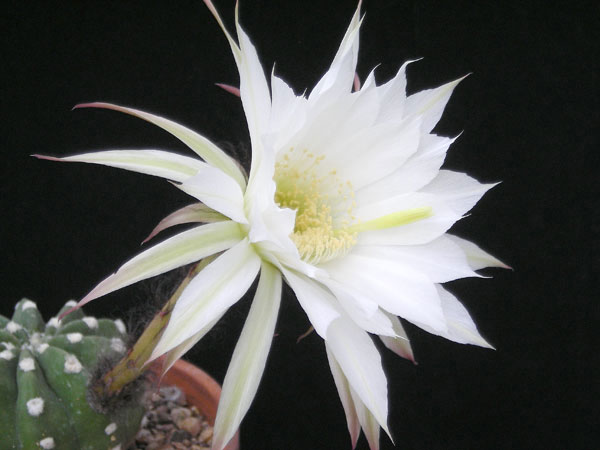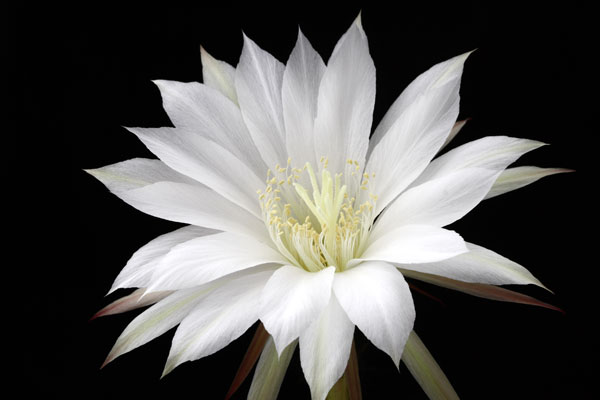The New Cactus Lexicon considers this to be Echinopsis ancistrophora but it is so well-known as E. subdenudata that I will use that name here. The genus name derives from the Greek (echinos) sea-urchin or hedgehog, (opsis) like, while the specific name refers to its lack of visible spines. In fact, although the plant body looks completely innocuous, what seem to be little tufts of hair hide some tiny, but quite sharp, spines.
E subdenudata is easily obtainable from any garden centre which sells cacti but should not be disparaged for that. My plant, which is still quite young, will generally produce two or three flowers in succession each year. Each flower starts to open in the evening. By the following morning it is fully open and the conservatory is filled with its attractive, light, lemony scent. By the end of the day the flower is over. Older plants will flower much more prolifically.

Fig. 1 E. subdenudata
E. subdenudata is found mainly in Bolivia where it grows in a variety of habitats including grasslands and wooded areas, at altitudes of around 600–1800m. In cultivation I find it prefers some light shade. Otherwise it grows in my usual mix of John Innes and grit in roughly equal proportions, with average water during the summer. It should be reasonably frost-resistant in winter, provided it is completely dry.

Fig. 2 E. subdenudata flower
Sheila Cude
No part of this article or the accompanying pictures may be reproduced without permission. Copyright BCSS & the Author 2017.
